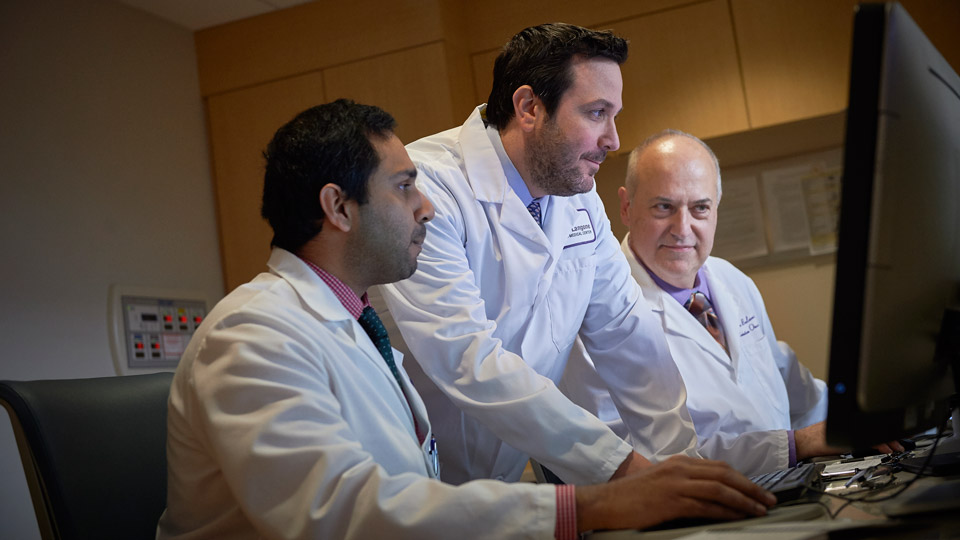Radiation Therapy for Stomach Cancer
NYU Langone specialists may recommend radiation therapy for people with stomach cancer. In radiation therapy, beams of energy are used to destroy cancer cells. For most people, treatment includes radiation, endoscopy, surgery, and chemotherapy. If surgery is not possible, radiation alone or a combination of chemotherapy and radiation—called chemoradiation—may be given.
Treatment Planning and Guidance
Our radiation oncologists use CT scans of the tumor and the surrounding tissue and organs, in conjunction with computer software, to customize treatment plans. The software creates a three-dimensional image of the tumor and surrounding organs. This enables doctors to determine how best to target the stomach cancer while sparing healthy tissue, such as the kidneys, lungs, and intestines.

Your doctor may use frequent CT scans during your treatments to ensure that radiation therapy is shrinking the tumor and avoiding nearby healthy tissue. This approach, which is called image-guided radiation therapy, helps compensate for organs moving during treatment due to breathing. The technique also enables doctors to track the size and shape of the tumor over several weeks, as radiation therapy begins to shrink the cancer.
Types of Radiation Therapy
NYU Langone doctors may use one of several types of external beam radiation therapy, in which a machine called a linear accelerator delivers beams of energy to a tumor. The machine rotates around you during therapy.
Three-Dimensional Conformal Radiation Therapy
Three-dimensional conformal radiation therapy allows doctors to deliver radiation beams tailored to the size, shape, and location of the stomach cancer. A machine delivers radiation beams, aimed from different directions, to the cancer.
Treatment is delivered once a day for five days a week over the course of several weeks. Breaking the radiation into small doses called fractions enables a doctor to shrink the tumor, while sparing healthy tissue and reducing the risk of side effects.
Intensity Modulated Radiation Therapy
Doctors at NYU Langone may use intensity modulated radiation therapy to manage stomach cancer. This approach is a specialized form of three-dimensional conformal radiation therapy. The energy beams come from different directions, but doctors break them up into many small, computer-controlled beams of different adjustable strengths. These “minibeams” are sculpted in three dimensions to conform to the size, shape, and location of the cancer.
This approach enables a doctor to deliver high doses of radiation therapy to a tumor, avoiding nearby healthy tissue. Treatment is given once daily, five days a week, for several weeks.
Volumetric Modulated Arc Radiation Therapy
In volumetric modulated arc radiation therapy, the linear accelerator moves around you in one or several 360-degree rotations during treatment.
With this therapy, radiation can be given from almost any angle, enabling doctors to more closely target the tumor, while avoiding healthy tissue. Doctors are also able to adjust the radiation beams continuously during treatment, allowing therapy to be administered without interruption.
As a result, treatment sessions may be shorter than other approaches, which require the linear accelerator to start and stop for adjustments. As with other forms of external beam radiation therapy, sessions are given once daily, five days a week, for several weeks, in doses called fractions.
Managing Side Effects
Side effects of radiation include nausea and fatigue. Symptoms tend to subside after treatment is finished. To minimize these effects, NYU Langone doctors spare healthy tissue from exposure to radiation.
Meet Our Doctors
Perlmutter Cancer Center specialists provide care and support during treatment.
Browse Doctors